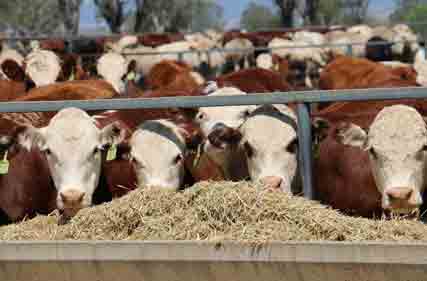
Turn-off saw a solid uptick, rising by 7% or 46,400 head at a national level to 714,000 head, demonstrating the significant contribution of the grainfed sector to total beef production.
The latest national feedlot survey results, released by the Australian Lot Feeders’ Association and Meat & Livestock Australia, demonstrate strong performance within the sector with numbers on feed remaining above 1 million head in the September quarter
A total of 1,056,056 cattle on feed in Australia was recorded for the September 2022 quarter, a decrease of 139,410 on the previous quarter.
Each state recorded reductions except for South Australia.
Queensland decreased by 11.6% to 626,125 head, New South Wales decreased by 8.8% to 305,554 head, Victoria decreased by 26.4% to 45,135 head and Western Australia also decreased by 26.4% to 40,406 head. South Australia increased by 7.6% to 38,836 head.
ALFA President Barb Madden said the feedlot industry is currently operating in challenging trading conditions which is reflected in the reduction of cattle on feed.
“Transport and logistics, high grain prices and cattle availability, coupled with persistent wet weather events hampering cattle performance, are all contributing to what is a challenging trading environment for the feedlot industry,” Mrs Madden said.
While we have seen some relief in feeder cattle prices this quarter, with the indicator down 9% or 48¢/kg lwt, and wheat ex-Darling Downs softened 6% or $23 to average $389/tonne on the Ukraine war inflated highs of the June quarter, wheat prices remain 16% higher, or $55/tonne, on year ago levels.
“Despite these challenges it is pleasing to see cattle on feed remain above 1 million head pointing to the resilience of lot feeders,” Mrs Madden said.
“In a sign of longer-term confidence in the lot feeding sector, national capacity broke new ground to reach 1.51 million,” Ripley Atkinson, MLA’s Senior Market Information Analyst, said.
“This is despite significant headwinds in input cost challenges and extreme weather events like the recent floods, affecting cattle performance.”.
Turn-off saw a solid uptick, rising by 7% or 46,400 head at a national level to 714,000 head, demonstrating the significant contribution of the grainfed sector to total beef production.
This has translated to strong export demand, according to Mr Atkinson, with strong improvements in volumes to South Korea and China in particular.
“Export volumes mostly remained firm quarter on quarter, continuing the trend of strong export performance to a diverse range of markets reflecting solid demand for Australian grainfed beef,” Mr Atkinson said.
To read the full report, click here.
https://www.mla.com.au/news-and-events/industry-news/cattle-numbers-remain-strong-despite-challenging-conditions/
